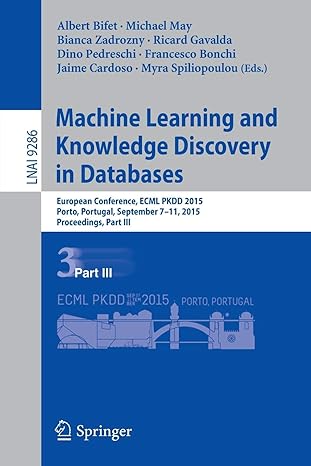Answered step by step
Verified Expert Solution
Question
1 Approved Answer
Invalid XML: ]> Tom Brady 100 tampa bay Tampa 33607 FL 443-242-2800 Tombrady@sml.com NFL Quarter back for the Bucaneers a. NFl PLayer New england Patriots

Invalid XML:
]>
Tom Brady
100 tampa bay Tampa 33607 FL
443-242-2800
Tombrady@sml.com
NFL Quarter back for the Bucaneers a.
NFl PLayer New england Patriots QB
NFl PLayer Tampa Bay Bucaneers
QB
NFL Player All time goat QB
Early Education Football La Michigan Athens USA
High School Football High school goat san fransico California
Graduate Football QB Academy Baltimore MD
Throwing, Decision making, Work ethic
seven time super bowl champion . Five time MVP. Scored 44 touchdown in 2020.
1. Recreate your resume XML document as valid using XMLSchema. This means that you will use the same resume, but swap out the DTD for a reference to the new external schema file. You need to use a namespace that you can create using your own gl account URL, just as I did in the chapter example. This will require 2 files resume.xml and resume.xsd. Also remove the entity defined by yourself in hwl since xml schema does not support self-defined entity. For validation tag, change it to be the command you use for schema based validation. 2. Validate your new resume using xmllint. Look at the man page to verify your syntax as having this form: xmllint --noout --schema note.xsd note.xml. Unlike xmllint output for DTDs, the output for schemas is: 'note xml validates' for the example above. Copy the xmllint command and output from the terminal screen and put it in a file called xmllint.txt. 3. Use an online validator to validate your resume. Be sure that the validation succeeds for your namespace. Put the online validator url and the complete output in a text file called xsv.txt. 4. Take a look at the above XMLSchema for SOAP. Remember that for standard schemas, you can use the namespace URL. Also remember that since schemas consist of all tags, you will have to view the source to actually see it. Find the XML subtree that defines the Body tag and uses the ##any wildcard. Copy just that complex type to a text file called any.txt. 5. I have programmed a similar kind of program as in figure 4.6 using PHP. This PHP shows you details at a lower level (obviously, you would not want to give this to a real user!). You will be programming this kind o thing yourself on gl in chapter 10. Go to the following URL and and enter a line. You will see some PHP response detail and the actual request and response SOAP messages - examine them closely. Copy the reques and response SOAP to a file soap.txt. o http://userpages.umbc.edu/~jianwu/is651/programs/ch10/convertTempWS.html 6. Create an HTML table of content (TOC) on gl for these chapter 4 homework tasks. It should show an ordered list where links 1-5 go to the files created in tasks 1-5. Submission: Upload the above 5 files to Blackboard and put the single url to this TOC in the Blackboard assignment submission area. 1. Recreate your resume XML document as valid using XMLSchema. This means that you will use the same resume, but swap out the DTD for a reference to the new external schema file. You need to use a namespace that you can create using your own gl account URL, just as I did in the chapter example. This will require 2 files resume.xml and resume.xsd. Also remove the entity defined by yourself in hwl since xml schema does not support self-defined entity. For validation tag, change it to be the command you use for schema based validation. 2. Validate your new resume using xmllint. Look at the man page to verify your syntax as having this form: xmllint --noout --schema note.xsd note.xml. Unlike xmllint output for DTDs, the output for schemas is: 'note xml validates' for the example above. Copy the xmllint command and output from the terminal screen and put it in a file called xmllint.txt. 3. Use an online validator to validate your resume. Be sure that the validation succeeds for your namespace. Put the online validator url and the complete output in a text file called xsv.txt. 4. Take a look at the above XMLSchema for SOAP. Remember that for standard schemas, you can use the namespace URL. Also remember that since schemas consist of all tags, you will have to view the source to actually see it. Find the XML subtree that defines the Body tag and uses the ##any wildcard. Copy just that complex type to a text file called any.txt. 5. I have programmed a similar kind of program as in figure 4.6 using PHP. This PHP shows you details at a lower level (obviously, you would not want to give this to a real user!). You will be programming this kind o thing yourself on gl in chapter 10. Go to the following URL and and enter a line. You will see some PHP response detail and the actual request and response SOAP messages - examine them closely. Copy the reques and response SOAP to a file soap.txt. o http://userpages.umbc.edu/~jianwu/is651/programs/ch10/convertTempWS.html 6. Create an HTML table of content (TOC) on gl for these chapter 4 homework tasks. It should show an ordered list where links 1-5 go to the files created in tasks 1-5. Submission: Upload the above 5 files to Blackboard and put the single url to this TOC in the Blackboard assignment submission area
Step by Step Solution
There are 3 Steps involved in it
Step: 1

Get Instant Access to Expert-Tailored Solutions
See step-by-step solutions with expert insights and AI powered tools for academic success
Step: 2

Step: 3

Ace Your Homework with AI
Get the answers you need in no time with our AI-driven, step-by-step assistance
Get Started


